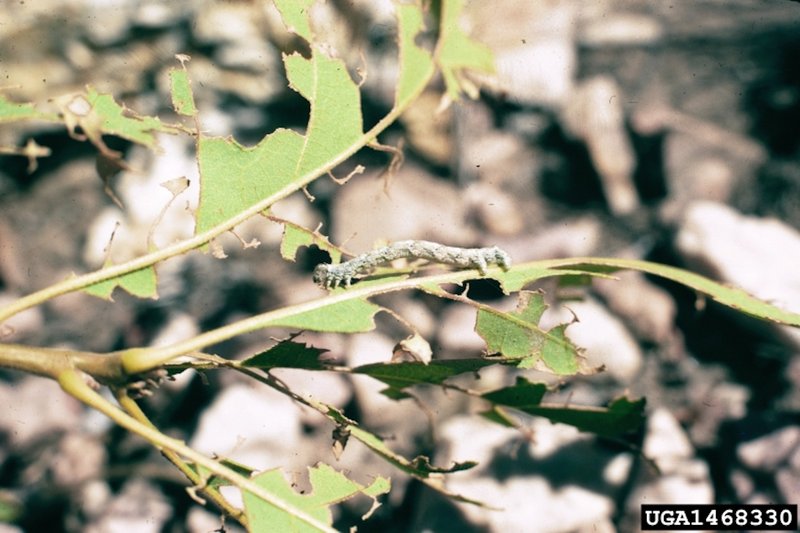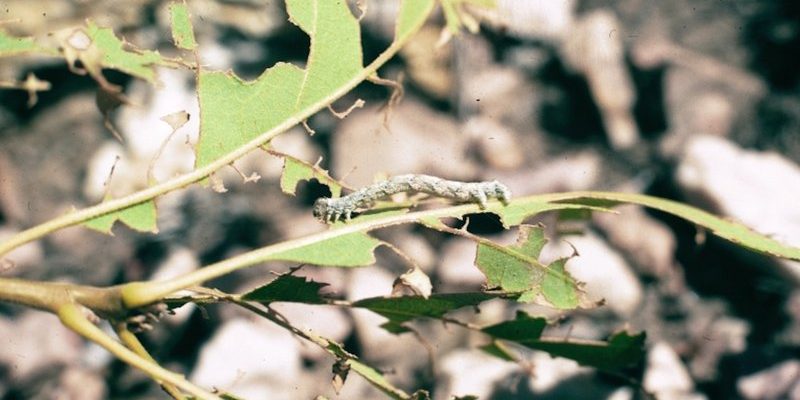
Inchworms are fascinating creatures, blending perfectly into their surroundings while they do their thing. You might be thinking they’re harmless, but when they band together, they can cause significant damage. Their munching can result in trees losing energy and vitality, just like you might feel drained after a long day without a decent meal. So, let’s dive into how these tiny insects defoliate our leafy friends and what that means for the environment around us.
What Are Inchworms?
Inchworms, despite their name, aren’t worms at all. They are actually the larvae of geometer moths. Named for their unique movement, inchworms “inch” along using a looping motion that makes them seem like they’re measuring their way through life. Most inchworms are around one to two inches long and can vary in color, blending in beautifully with leaves and twigs. This camouflage is crucial for their survival, helping them avoid predators while they munch away on foliage.
You might come across various species of inchworms, but they all share a common trait: they love to eat leaves. Their diet includes a variety of trees and shrubs, making them quite adaptable. When the weather warms up in spring, that’s their cue to emerge and start feeding. As they grow, inchworms can consume an impressive amount of leaves, leading to defoliation that can be alarming for any gardener or tree enthusiast.
How Do Inchworms Cause Defoliation?
Inchworms defoliate trees and shrubs primarily by consuming the leaves they can reach. Their preferred diet includes young, tender leaves, which are more nutritious than older, tougher foliage. The process usually starts when a small group of inchworms hatches from eggs laid on or near tree branches.
As they begin to feed, you might not notice them right away. Inchworms tend to congregate on particular trees, and their camouflaged colors make them hard to spot. They can strip a tree or shrub of its leaves in no time, especially during peak feeding periods. Think of it like a team of enthusiastic diners at an all-you-can-eat buffet—they quickly devour everything in sight!
The Impact of Inchworm Defoliation
When a tree loses its leaves, it can’t perform photosynthesis effectively. This means it struggles to produce the energy it needs to grow and thrive. If defoliation occurs early in the season, it can severely impact the tree’s health. For example, trees may produce fewer fruits or flowers, and they can become more susceptible to diseases and pests.
In some cases, trees can recover from defoliation, especially if it’s not too severe and if they’re given proper care afterward. However, repeated years of heavy defoliation can lead to decreased growth rates or even tree mortality. It’s like being constantly drained of energy—you might hang in there for a while, but eventually, you’ll feel the effects in the long run.
Identifying Inchworm Damage
Recognizing the signs of inchworm damage involves a little detective work. Look for trees with bare branches or leaves that appear to have been neatly bitten away. If you see clusters of these little caterpillars, it’s a sure sign they’re the ones causing the trouble.
Keep an eye out for tiny droppings that resemble small pellets; this can be a telltale sign of an inchworm infestation. Additionally, you might notice frass (insect waste) accumulating beneath the affected branches. The more you observe your trees, the better you’ll become at spotting these signs early. Catching these critters before they cause too much damage is key!
Preventing Inchworm Infestations
Taking proactive steps is important to keep inchworms at bay. Here are a few strategies to protect your trees and shrubs:
- Regular Inspections: Routinely check your plants for signs of inchworms or their damage. Early detection can help you manage any infestations before they grow.
- Encourage Beneficial Predators: Birds, like chickadees and warblers, love to snack on inchworms. Creating a welcoming habitat for these birds can help keep inchworm populations under control.
- Use Physical Barriers: Hanging sticky barriers or using row covers during peak season can prevent inchworms from reaching the leaves.
- Consider Organic Pesticides: If infestations get out of hand, using organic insecticides like Bacillus thuringiensis (Bt) can target inchworms without harming beneficial insects.
Implementing these strategies can help maintain the health of your trees and shrubs while also keeping inchworms in check.
What to Do If Your Trees Are Infested
If you find that your trees are already infested with inchworms, don’t panic! There are effective ways to handle the situation. First, you can try manually removing the inchworms by hand. It might feel a little gross, but this can be effective and doesn’t harm any surrounding wildlife.
Another option is to spray the affected trees with a mixture of water and dish soap. This can suffocate the inchworms, helping to reduce their numbers. Just be careful not to spray it on beneficial insects, as this can disrupt the ecosystem.
Additionally, if the infestation is severe, consulting a professional arborist can provide tailored advice and treatment options. They might suggest different strategies or even solutions you hadn’t thought of.
Inchworms might be small, but they pack a punch when it comes to defoliating trees and shrubs. By understanding **how inchworms defoliate**, recognizing their damage, and taking proactive steps, you can help protect your green spaces. Remember, these little critters have a role in the ecosystem, but that doesn’t mean they should have free rein over your beloved plants!
With a little knowledge and some hands-on care, you can keep your trees thriving and, in turn, enjoy the beauty of nature that surrounds us. So the next time you take a walk in the park, you’ll not only appreciate the trees but also worry a little less about those inchworms hiding among the leaves.

